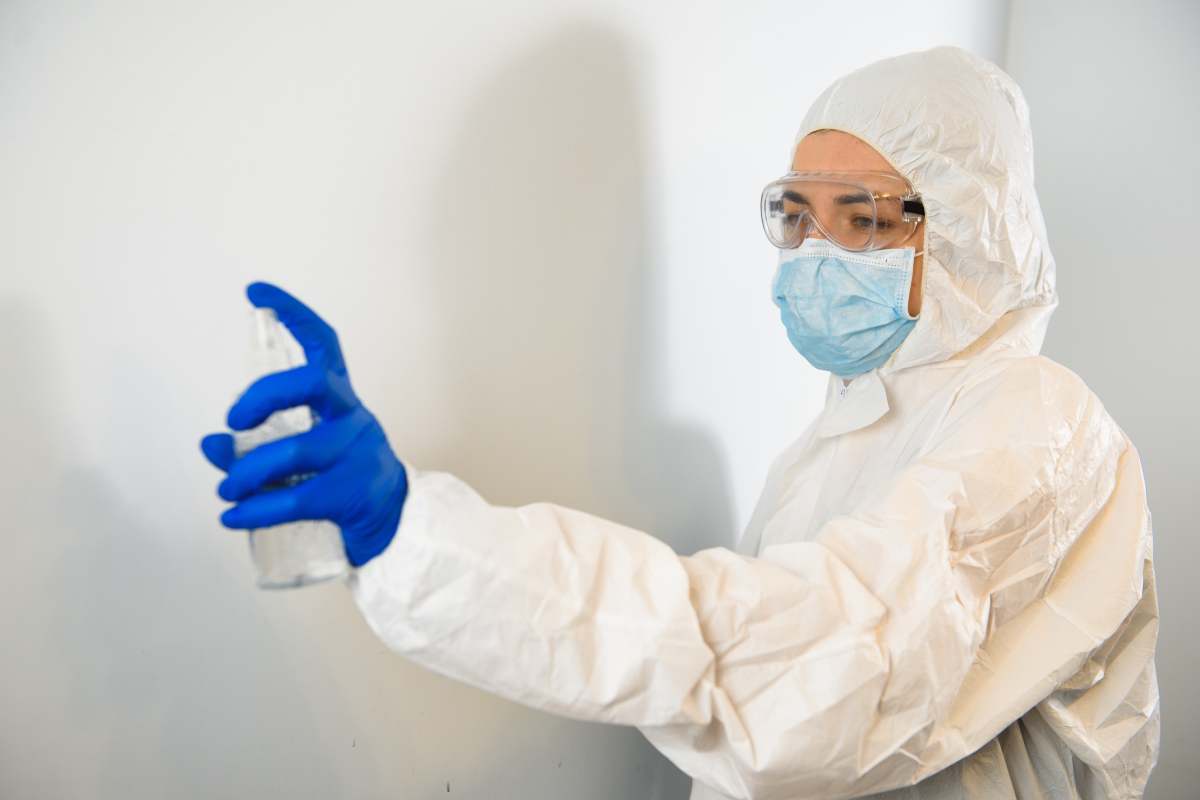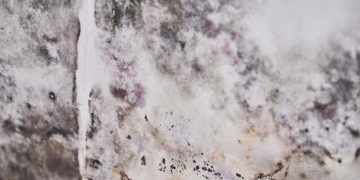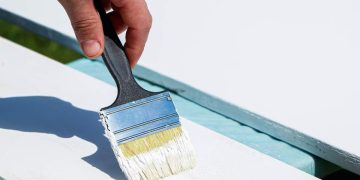Mold toxicity is a growing concern that more people are becoming aware of. Many people start looking into mold-related illnesses when they experience symptoms that don’t seem to have a clear cause. They begin to wonder if something in their environment might be affecting their health.
Most people are exposed to unseen mould every day, but those who have sensitivities, allergies, asthma, chronic lung issues, or other immune system problems are at a higher risk of getting sick from mould. Even if you aren’t sensitive to mould, being exposed to it repeatedly over time can still make your allergies worse. Some types of mould produce toxins called mycotoxins, which some experts think might make us feel unwell, though research on this is still ongoing.
Here’s a look at what happens when you’re exposed to mycotoxins and how you can avoid them.
What is Black Mold?
Black mould is a type of fungus that looks dark green or black. The most common type people refer to is called Stachybotrys chartarum (S. chartarum). This mould grows on materials that contain cellulose, which is a fibre found in fruits, vegetables, and plants. In your home, black mould might grow on things like paper products, wood, or drywall.
Where Does Black Mould Grow?
Black mould thrives in warm, damp environments. You’ll often find it in places that have been exposed to moisture or water damage, such as:
- Basements
- Showers
- Windows
For most people, black mould isn’t extremely dangerous or life-threatening. However, it can cause health problems, especially for those with allergies or respiratory issues.
Black mould is a dark-coloured fungus that grows on cellulose-rich materials in damp areas of your home. While it can cause health issues for some people, it is not usually deadly.
Can Black Mould Make You Sick? How Dangerous Is It?
black mould (Stachybotrys chartarum) can make you sick. The severity of its health effects can vary depending on the extent of exposure, the individual’s health condition, and the concentration of mould spores in the environment.
According to
this, here are the potential health risks and the dangers it pose:
Health Risks
- Allergic Reactions:
- Symptoms: Sneezing, runny nose, red eyes, and skin rashes.
- Susceptibility: More common in individuals with allergies, asthma, or other respiratory conditions.
- Respiratory Issues:
- Symptoms: Coughing, wheezing, shortness of breath, and throat irritation.
- Vulnerability: People with asthma, chronic respiratory diseases, or weakened immune systems are more likely to experience severe symptoms.
- Toxic Effects:
- Mycotoxins: Some strains of black mould produce mycotoxins, which can be harmful when inhaled or ingested.
- Symptoms: Chronic fatigue, headaches, dizziness, nausea, and in severe cases, neurological problems like memory loss or confusion.
- Infections:
- Susceptibility: Individuals with compromised immune systems, such as those undergoing chemotherapy or with HIV/AIDS, are at a higher risk of fungal infections caused by mould exposure.
How Dangerous Is Black Mold?
- Short-Term Exposure: Can cause immediate allergic reactions and respiratory symptoms, especially in sensitive individuals.
- Long-Term Exposure: Prolonged exposure to black mould, especially in high concentrations, can lead to more serious health issues, including chronic respiratory problems and systemic infections.
- High-Risk Groups: Infants, elderly people, those with pre-existing respiratory conditions, and individuals with weakened immune systems are at greater risk for severe health effects.

What Causes Black Mould In My House?
Black mould (Stachybotrys chartarum) typically develops in homes due to conditions that promote its growth. The primary factors include:
Causes of Black Mold in Homes
- Moisture:
- Leaks: Leaky roofs, windows, pipes, or basements can create moist conditions ideal for mould growth.
- Flooding: Flooded areas that are not properly dried out within 24-48 hours can become breeding grounds for mould.
- Condensation: Poor insulation or ventilation can lead to condensation on walls, windows, and pipes, providing moisture for mould.
- High Humidity:
- Indoor Humidity: Homes with indoor humidity levels above 50% can support mould growth. Activities like cooking, showering, and drying clothes indoors increase humidity.
- Poor Ventilation: Inadequate ventilation in areas like bathrooms, kitchens, and basements can trap moisture and humidity, fostering mould growth.
- Damp Materials:
- Building Materials: Materials such as wood, drywall, and carpeting that remain damp or wet for extended periods are susceptible to mould.
- Clutter: Cluttered areas with limited air circulation can retain moisture and create a conducive environment for mould.
- Lack of Maintenance:
- Neglected Repairs: Ignoring necessary repairs, such as fixing leaks or replacing damaged insulation, can lead to persistent moisture problems.
- Poor Cleaning: Infrequent cleaning, especially in moisture-prone areas, can allow mould spores to settle and grow.
Common Locations for Black Mould
- Bathrooms: Due to high humidity from showers and baths.
- Kitchens: From cooking steam and potential leaks around sinks and dishwashers.
- Basements and Crawl Spaces: Often damp and poorly ventilated.
- Attics: Can have condensation issues, especially if not properly insulated.
- Windows and Doors: Areas around windows and doors can develop condensation and leaks.
Preventing Black Mold
- Control Moisture:
- Fix leaks promptly.
- Use exhaust fans in bathrooms and kitchens.
- Use dehumidifiers in high-humidity areas.
- Ensure proper drainage around your home to prevent water from seeping into the foundation.
- Maintain Proper Ventilation:
- Open windows and doors to increase air circulation.
- Use ventilation fans in moisture-prone areas.
- Ensure your HVAC system is functioning correctly and circulating air effectively.
- Adding an air purifier to help remove mould spores from the air in your home.
- Regular Inspections and Maintenance:
- Check for and repair leaks regularly.
- Clean and maintain gutters and downspouts.
- Inspect and clean areas prone to moisture, such as under sinks, around windows, and in basements.
- Prompt Drying:
- Dry any wet areas within 24-48 hours.
- Remove and replace water-damaged materials, such as carpets, drywall, and insulation, if they cannot be thoroughly dried.

How Much Does Mould Removal Cost in Australia?
The cost of mould removal in Australia can vary widely depending on several factors, including the extent of the mould infestation, the size of the affected area, the location of your property, and the specific services required. Here’s a general overview of what you might expect in terms of costs:
Factors Influencing Mold Removal Costs
- Extent of Infestation:
- Small Areas: Minor mould problems in small areas like bathrooms or kitchens might cost between AUD 300 to AUD 500.
- Moderate Areas: Medium-sized infestations in larger rooms or sections of the house can range from AUD 500 to AUD 2,000.
- Large Areas: Extensive mould problems affecting multiple rooms or the entire house can cost between AUD 2,000 to AUD 6,000 or more.
- Type of Mold:
- Surface Mold: Easier to clean and less expensive to remove.
- Deep or Structural Mold: Requires more intensive remediation and can significantly increase costs.
- Location:
- Accessibility: Hard-to-reach areas like attics, basements, or behind walls can be more expensive to treat.
- Property Location: Costs might be higher in urban areas compared to rural areas due to differences in labour rates and availability of services.
- Required Services:
- Inspection and Testing: Professional inspection and testing can cost between AUD 200 to AUD 600.
- Cleaning and Disinfection: Basic cleaning and disinfection services might cost between AUD 300 to AUD 1,000.
- Structural Repairs: If mould has caused significant damage to building materials, repairs can add several hundred to several thousand dollars to the total cost.
Average Cost Breakdown
- Inspection and Assessment:
- Basic Mold Removal:
- Small areas: AUD 300 to AUD 500
- Moderate areas: AUD 500 to AUD 2,000
- Large areas: AUD 2,000 to AUD 6,000
- Additional Costs:
- Drying and Dehumidification: If required, this can add AUD 200 to AUD 1,000.
- Repairs and Restoration: Varies widely based on damage but typically ranges from AUD 500 to AUD 3,000 or more.
Professional vs. DIY
- Professional Services: While more expensive, professional mould removal ensures thorough cleaning and mitigation of health risks. Professionals also have the expertise and equipment to handle extensive mould problems safely.
- DIY: For minor mould issues, DIY removal using household cleaners and protective gear can be cost-effective. However, improper handling can lead to further spread and health risks, so it’s recommended only for small, non-toxic mould problems.
Tips for Reducing Costs
- Early Detection: Address mould problems as soon as they appear to prevent the extensive spread and higher remediation costs.
- Preventive Measures: Maintain proper ventilation, fix leaks promptly, and use dehumidifiers to prevent mould growth.
- Get Multiple Quotes: Obtain quotes from several professional mould removal companies to compare services and prices.
What’s the Difference Between Black Mould and Mildew?
Mildew is a vague term that people use in different ways. Sometimes it just refers to the surface stains that mould leaves behind, while other times it’s used to describe certain types of mould.
Black Mold is a specific type of fungus that grows in warm, damp places. Its spores can cause allergic reactions, which might lead to symptoms like:
- Coughing
- Sneezing
- Congestion
- Irritated eyes
While black mould can cause these symptoms, it rarely makes people very sick.
If You Think You’re Allergic to Black Mould
If you have symptoms of a black mould allergy, see a healthcare provider. They can:
- Test for a black mould allergy.
- Recommend treatments or medications to help with your symptoms.

















































